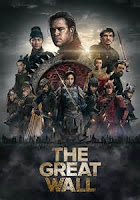Background Music
Background music is very important in horror films because they help create the scary atmosphere and often signifies the build up of events. The typical features include isolated instruments playing a solo. This links with the idea of vulnerability of the characters. In most cases, the music would in a minor key and dissonant chords to express the scared feelings and danger of the protagonist. To begin with, it would usually start at a slow pace with low pitch sounds to lengthen the suspense.
Typical instruments would include string instruments. This is because it can reach a high pitch to make the audience uncomfortable. Bass would be used quite a lot, sometimes to represent a heartbeat or forebode what's going to happen next.
There is often a large contrast between the start and the climax of the film. This is likely to start off with long held note and then contradicted with staccato notes and stabs to shock the audience and indicate that the action is about to begin. There is also an increase in volume and dramatic changes in pitch to create tension. Sudden silences is often used to create a shocking ending.
A good example is the film Jaws. The beginning starts off quite slow in the minor key to suggest danger. as the action begins, the tempo increases and there are short notes to emphasise the panic and fear.
A good example is the film Jaws. The beginning starts off quite slow in the minor key to suggest danger. as the action begins, the tempo increases and there are short notes to emphasise the panic and fear.
Sound Effects
There are some iconic sound effects which often connotes with horror such as church bells, owls or footsteps. Church bells are often heard in those films of a paranormal genre linking with religion and supernatural beings. Furthermore, echoes are used to create the eerie atmosphere. A lot of the time, there is use of foley to exaggerate the sounds and make it more noticeable.
Voices
Generally, the antagonist's voice is likely to be male due to their deep voices. Usually their voices are quite distinctive and recognisable, therefore adding to unknown threat, even if they do not appear on screen.
However, in some horror films, there are whispering voices to create the tension and and fear. Often, it is a child who contradicts the innocent cheerful character. For example, in 'The Shining' where the two little girls speak in a whispering monotone voice in sync to create the feeling of uneasiness.
Main Brief
In the main brief, the background music would start of slow to create the suspense. As the scene reaches the climax, the volume would increase as well as the tempo to indicate that something is going to happen. We will also add sound effects such as footsteps and rustling leaves to create the sense that someone is following the protagonist. As is is just the opening, the antagonist will not have any lines.












































